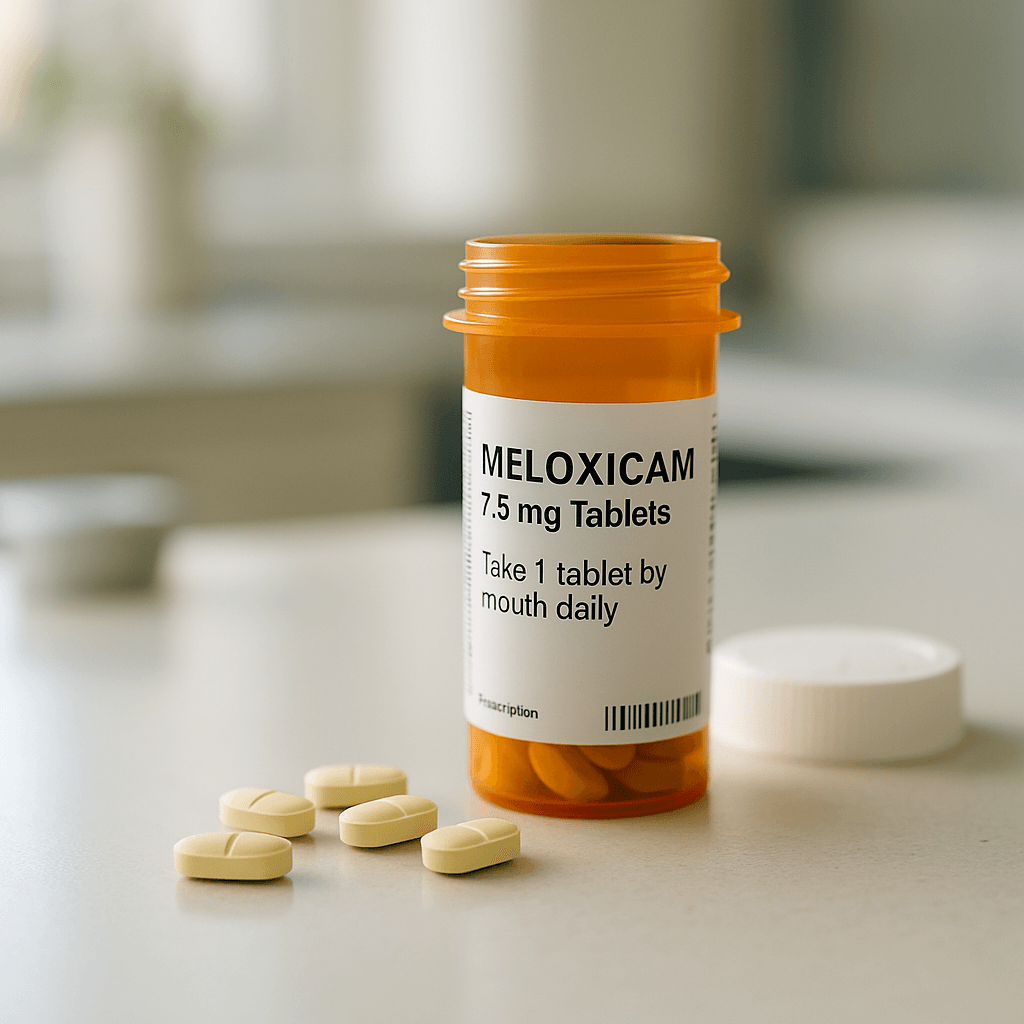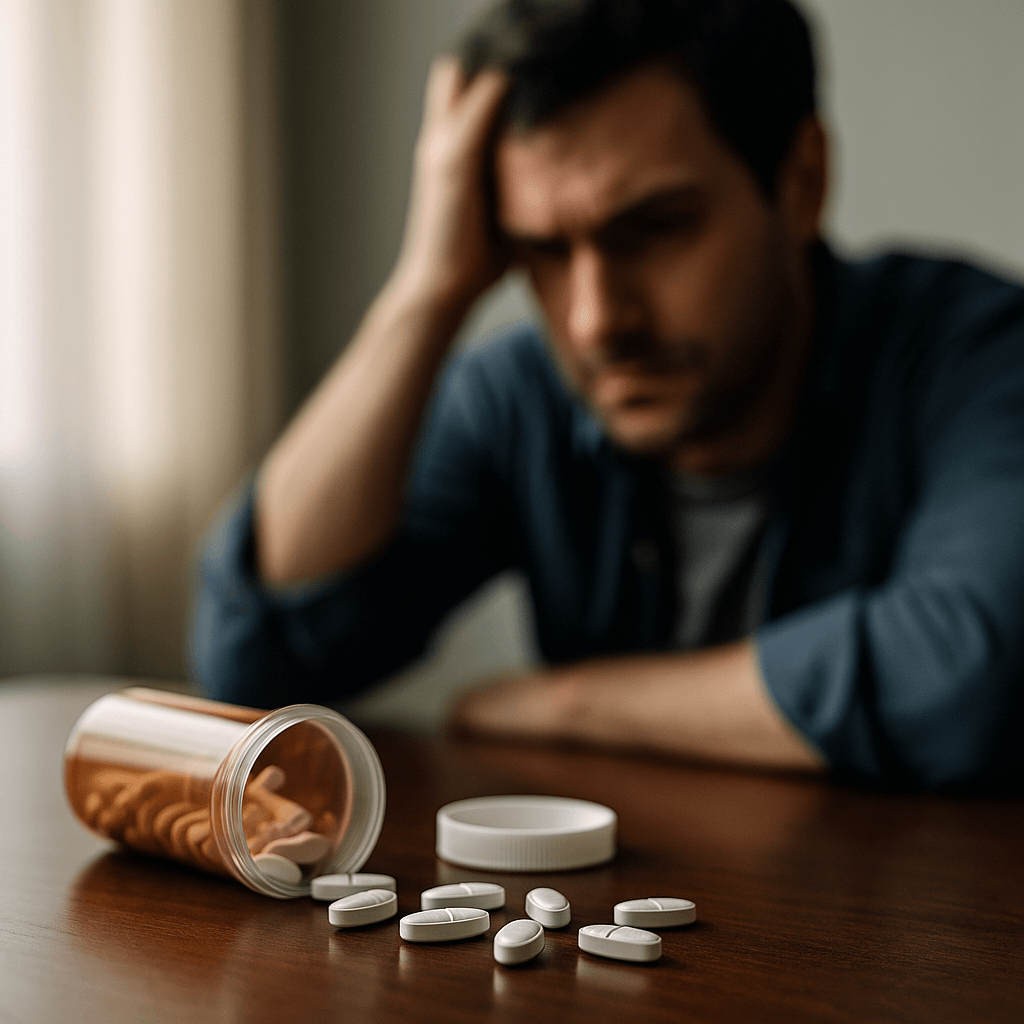Last Updated on November 12, 2025
Meloxicam at a Glance
Meloxicam is a prescription nonsteroidal anti-inflammatory drug (NSAID). It reduces pain and swelling by blocking inflammatory enzymes. While effective, it carries a U.S. FDA boxed warning for serious heart and gastrointestinal (GI) events. The FDA label for Mobic highlights risks of heart attack, stroke, GI bleeding, and ulceration that can occur without warning symptoms. The Mayo Clinic drug monograph also notes blood pressure increases and interactions with other medicines.
Major Risks and Who Is Most Vulnerable
- Cardiovascular events: NSAIDs may increase the risk of heart attack and stroke, especially with longer use or in people with existing heart disease or risk factors. These events can be fatal and may occur suddenly (FDA).
- Gastrointestinal injury: Meloxicam can cause stomach or intestinal bleeding, ulcers, or perforation at any time, sometimes without prior symptoms. The elderly have higher risk (FDA).
- Kidney effects: NSAIDs may reduce kidney blood flow, leading to fluid retention or kidney injury. People with dehydration, heart failure, or pre-existing kidney disease are more vulnerable (Mayo Clinic).
- Blood pressure and interactions: Meloxicam can raise blood pressure and blunt the effect of some antihypertensives. It may interact with blood thinners and other drugs, increasing bleeding risk (Mayo Clinic).
Alcohol + Meloxicam: Why the Combination Is Risky
Alcohol irritates the stomach lining and thins the blood. When combined with an NSAID like meloxicam, the odds of GI bleeding rise. Guidance on meloxicam and alcohol interactions warns against drinking because signs of bleeding—such as black, tarry stools or coffee-ground vomit—can appear abruptly. Mixing alcohol also worsens dizziness or drowsiness and may impair judgment, which can hide early warning signs.
Common Side Effects vs. Red-Flag Symptoms
- More common: Upset stomach, nausea, headache, heartburn, dizziness.
- Seek urgent care for: Chest pain, sudden weakness on one side, trouble speaking, black stools, vomiting blood, severe stomach pain, shortness of breath, swelling of face or throat, or little to no urine output (WebMD; FDA).
Misuse, Overdose, and Interaction Concerns
People sometimes search for “melixicam” when they mean meloxicam or Mobic. Taking more than prescribed does not improve pain control and raises harm. Overdose symptoms can include severe stomach pain, vomiting, lethargy, shallow breathing, seizures, or GI bleeding, and require immediate medical care. Supportive treatment is typical; in some cases, cholestyramine can enhance drug elimination (DrugBank).
Combining meloxicam with other NSAIDs (ibuprofen, naproxen), certain antidepressants, steroids, anticoagulants, or heavy alcohol use compounds bleeding and cardiovascular risks. Always review your full medication list with your prescriber (Mayo Clinic).
Safer Use Tips If Your Doctor Prescribes Meloxicam
- Use the lowest effective dose for the shortest possible time.
- Take with food and a full glass of water. Avoid lying down for at least 10 minutes afterward.
- Avoid alcohol while taking meloxicam to reduce bleeding risk (Drugs.com interaction checker).
- Report red-flag symptoms right away, even if mild at first.
- Ask whether acetaminophen is a better fit for occasional pain if you have heart or GI risk. Do not combine pain relievers without medical advice (WebMD).
When Substance Use Makes Meloxicam More Dangerous
Regular drinking, misuse of sedatives, or stimulant binges all stress the body. Alcohol inflames and erodes the GI tract. Sedatives slow breathing. Stimulants raise blood pressure and heart strain. Layering meloxicam on top can push a vulnerable system over the edge. If pain relief is important but alcohol use is hard to stop, addressing the alcohol first may be the safest path.
Comprehensive care is available. Nova’s Austin drug detox center offers medically supervised withdrawal and a hand-off into therapy. For those who need structure and stability, our Austin drug rehab residential center provides 90-day inpatient treatment with evidence-based care. If you are stable but need ongoing help, our Intensive Outpatient Program (IOP) offers flexible day and evening groups.
Talking With Your Doctor
Bring a full list of prescriptions, over-the-counter drugs, and supplements to every visit. Tell your clinician how much you drink, even if it is more than you would like to admit. Honest conversations prevent dangerous interactions and help your team plan safer pain options. If you are pregnant, have ulcers, advanced kidney disease, uncontrolled hypertension, or recent heart problems, ask about alternatives because meloxicam may be inappropriate (FDA boxed warning).
How Recovery Support Changes the Risk Equation
Finding effective pain relief is easier when alcohol or drug use is under control. Treatment improves sleep, mood, and physical function, which can reduce pain perception. In Austin, Nova provides a full continuum—from detox to residential care to IOP—so your medical and behavioral health teams can coordinate safer, non-opioid pain strategies while you recover. Explore our drug and alcohol rehab treatment in Austin, TX to start a safer plan today.
Important: This article is educational and not medical advice. Never start, stop, or change a prescription without guidance from your healthcare provider.















